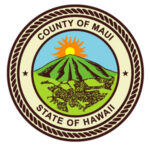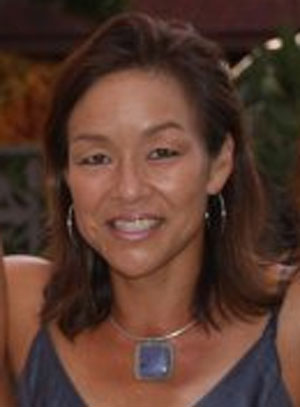
Sep 8, 2011 | Community
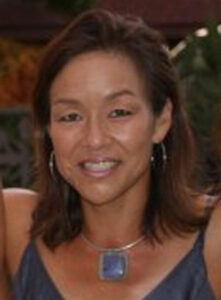 Parents at Kamali’i Elementary School in Kihei know that teachers don’t educate alone, and that’s why a group of them are launching a new tutoring program this month. It’s called “Study Buddies,” and instead of getting assistance with homework after school, students will be able to get help before the school day begins. “Children who are having difficulty finishing homework, grasping certain basic core concepts or those who need to practice with their reading or math skills can take advantage of this program,” said Rachel Christopher, one of the parents behind Study Buddies.
Parents at Kamali’i Elementary School in Kihei know that teachers don’t educate alone, and that’s why a group of them are launching a new tutoring program this month. It’s called “Study Buddies,” and instead of getting assistance with homework after school, students will be able to get help before the school day begins. “Children who are having difficulty finishing homework, grasping certain basic core concepts or those who need to practice with their reading or math skills can take advantage of this program,” said Rachel Christopher, one of the parents behind Study Buddies.
The program involves two volunteers per day devoting 25 minutes a morning from 8 to 8:25 a.m. Monday through Friday. As the program progresses, more volunteers may be needed.
Study Buddies does not replace after-school tutoring assistance nor the work of community volunteers and parents during the school day. Christopher, the mother of two children including a 4th-grader at Kamali’i Elementary, said she understands that it’s difficult for teachers to allot individual quality time with each of their students. “Children who are struggling often consume more of a teacher’s time, which leaves less attention for the rest of the class,” Christopher said.
The goal of Study Buddies is to help struggling students finish their homework and build their skills in the areas of reading, writing and math. Christopher said she believes every child deserves the opportunity to tap into their potential, but not all are able to because of varying situations including the lack of one-on-one time to build confidence in their academic skills. Study Buddies will be open to all grades. Tutoring will be conducted in the school library. Once the program gets under way, Christopher and the same group of parents hope to start a math club to support basic concepts and core math skills. To volunteer for Study Buddies, contact Rachel Christopher at 385-8885 or email at racheken[at]hawaii[dot]rr[dot]com.
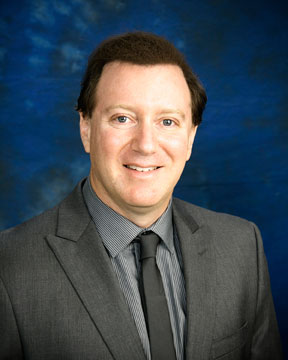
Aug 31, 2011 | Community
 Continuing our series on newly appointed County Department Directors, reflecting the role of government in responding to community values and needs.
Continuing our series on newly appointed County Department Directors, reflecting the role of government in responding to community values and needs.
Department of Water Supply Director Dave Taylor approaches his job by taking cues from the community he serves. “The biggest thing I’d like people to see is that I work for them. It’s their water system, not mine,” Taylor said. “I honestly see myself as the water maintenance guy for the people.” As water director, Taylor oversees 200 employees and a system that features 750 miles of pipeline, 125 water tanks and six treatment plants. “That’s a lot to take care of. It’s always difficult and it’s certainly a challenge,” he said. What brings the most enjoyment is working his staff. “We have a fantastic group of incredibly talented people in many different professions. The public would be pleasantly surprised if they knew how deeply our staff members care about what they do. I am proud that they act as if they are working for their own family and their own home.”
Taylor recently outlined several options to the Maui County Council on how the water system could be improved over the next decade. It would take an investment of some $30 million, he said. For now, Taylor focuses his energy on establishing a clear vision for his agency, setting goals that include providing clear and safe water efficiently. He said he drinks water from the tap all the time and considers county water rates to be a bargain, in part because it costs less than $2 per thousand gallons for water to be delivered to each home on Maui. “You can’t beat the value of county water.”
Taylor grew up in Southern California, earning his bachelor’s degree in mechanical and environmental engineering from the University of California at Santa Barbara. He obtained his master’s degree in structural engineering from UC Berkeley. In his spare time, Taylor enjoys windsurfing, a sport he picked up from the age of 16, and keeping fit with regular gym work outs.
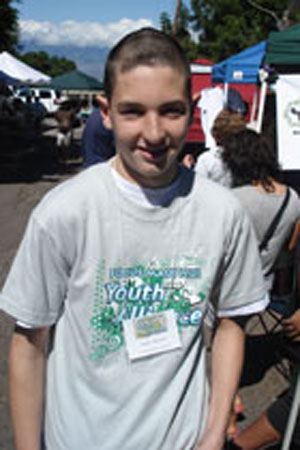
Aug 17, 2011 | Community
 Guided by the Focus Maui Nui vision, values and key strategies for action, Youth Alliance members are empowered with the skills and experiences to become leaders for change. For the third consecutive year, 16-year-old Adam Skelton has signed up to be a part of the Youth Alliance. “I’ve learned a lot and picked up experiences I’ve never had before,” the Upcountry student said.
Guided by the Focus Maui Nui vision, values and key strategies for action, Youth Alliance members are empowered with the skills and experiences to become leaders for change. For the third consecutive year, 16-year-old Adam Skelton has signed up to be a part of the Youth Alliance. “I’ve learned a lot and picked up experiences I’ve never had before,” the Upcountry student said.
Youth Alliance members in grades 9 through 12 gather monthly during the school year to explore the many facets of the Maui community including the business sector, cultural sites, civic leaders and sometimes a Neighbor Island. This behind-the-scenes look is accompanied by projects and activities that give participants a greater understanding of how the Maui community works. “I wish the program would have been available to me when I was in high school,” said Willow Krause, a 1998 Baldwin High School graduate and Youth Alliance project coordinator.
Skelton said Krause accommodates the students by exploring their fields of interest. For example, Skelton, who has aspirations of building his own business one day, has seen first-hand how local entrepreneurs thrive. He said he’s not interested in a firefighter career, but visiting a local fire station gave him insight into the field. “Firefighters don’t just fight fires. They go out into the community and help out in a number of ways.” Born and reared on Maui, Skelton said it was the Youth Alliance program that brought his attention to local issues such as the previous public school Furlough Fridays, organic farming and points of interests on Lanai.
Skelton said he would highly recommend students to enroll this school year. “I’d say ‘Give it a try and see how you like it. You might just love it.’“ Applications are now being accepted from high school students including those who are homeschooled. The program is free, and the deadline to sign up is Sept. 9. For more information, contact Krause at 875-2432 or willow[at]medb[dot]org.

Aug 10, 2011 | Community
 Health care is one of the most important needs in the community, and the Kihei Wailea Medical Center is contributing its time and talent toward helping the island’s uninsured. The staff and its physicians, Dr. Marcus Griffin and Dr. Gayland Yee, have held free health screening clinics for more than 100 patients during the last two years. The most recent event in June drew 60 patients and has inspired other health care providers to follow the medical facility and Office Manager Joel Krause’s lead. “People want to help, they want to give back and that positive energy is wonderful,” Krause said.
Health care is one of the most important needs in the community, and the Kihei Wailea Medical Center is contributing its time and talent toward helping the island’s uninsured. The staff and its physicians, Dr. Marcus Griffin and Dr. Gayland Yee, have held free health screening clinics for more than 100 patients during the last two years. The most recent event in June drew 60 patients and has inspired other health care providers to follow the medical facility and Office Manager Joel Krause’s lead. “People want to help, they want to give back and that positive energy is wonderful,” Krause said.
Griffin and Krause get so many volunteers from the staff of 28 at Kihei Wailea Medical Center that they had to turn away some for this most recent venture. Krause said they also get a lot of help from other labs and therapists — Clinical Laboratories of Hawaii, Maui Diagnostic Imaging, and Bodies in Motion — as well as Safeway, which supported the initiative. Dr. Griffin started the free clinics as a means to give back to the medical field in which he himself has received so many rewards. “Even if we help only one person, this clinic will still be a success,” Griffin said. Krause said the free clinics are important to the Kihei Wailea Medical Center as it strives to live out an updated mission statement: “Working together to care for our community.”
Krause figures the value of the free clinic day runs to thousands of dollars. It’s meaningful to the uninsured, who often delay getting medical help because it’s unaffordable for them. There are plans to hold a comprehensive free medical screening day that would feature a variety of medical specialists offering services from obstetrics to opthamology plus a blood drive. “Our goal is to be able to help as many patients as possible with all types of concerns,” Krause said. “We hope to have several offices open all over South Maui providing free service.”
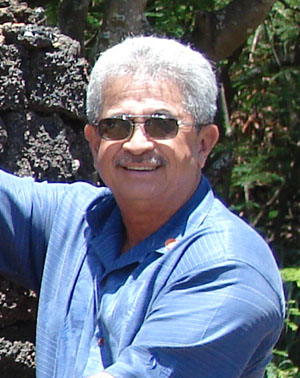
Aug 3, 2011 | Community
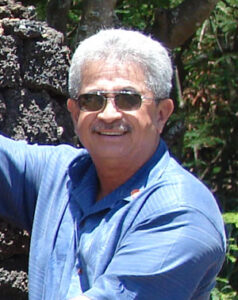 Continuing our series on newly appointed County Department Directors, reflecting the role of government in responding to community values and needs.
Continuing our series on newly appointed County Department Directors, reflecting the role of government in responding to community values and needs.
Maui County Parks and Recreation Director Glenn Correa returned from retirement to serve a second-term for a department he feels passionate about. “It’s a golden opportunity,” he commented. Correa said the success of his department falls on the 430 people who work in divisions including recreation, aquatics, maintenance, planning and administration. “We cannot be everything to everybody, but we try very hard to meet the expectations of the community with the resources we have because we know that our parks department impacts everyone,” he said. The Parks and Recreation Department oversees 145 parks covering 1,620 acres on Maui, Molokai and Lanai. This includes the Waiehu Golf Course, 22 community centers, 55 tennis courts and nine swimming pools.
“I know there are many times when the public feels we just don’t have enough park facilities to serve our community,” Correa said. He said there are future plans to add more facilities, and meanwhile, heavy use requires proactive upkeep and maintenance. Correa said he values the teamwork within his department and his hope is that the community will recognize and acknowledge what the department does to serve the people of Maui.
Correa is a 1967 Baldwin High School graduate who served in the U.S. Navy and saw combat in Vietnam. After four years of military service, he returned to Maui in 1971 and was initially employed by American Electric. He was first tapped to work for the County as a electrician’s helper at the Department of Parks and Recreation. He has served under five mayors, nine parks directors and now a two-time appointee of Mayor Alan Arakawa. He loves playing golf and has been married for nearly 40 years to his wife, Lani.
Jul 22, 2011 | Community
 As one of Maui’s last surviving mom-and-pop stores, Pukalani Superette contributes to the island’s economic sustainability by providing a local alternative to supermarkets and chain stores, buying from island suppliers and providing jobs to Upcountry residents. “Sumiko Nakashima ran the Superette from 1965 to 1990 and always passed the discounts offered from the vendors down to the customer,” says co-owner Myles Nakashima. “We still do this, which is why our prices are very competitive.”Originally called Tanizaki Store, the establishment has its roots in Maui’s plantation past, opening in 1924.
As one of Maui’s last surviving mom-and-pop stores, Pukalani Superette contributes to the island’s economic sustainability by providing a local alternative to supermarkets and chain stores, buying from island suppliers and providing jobs to Upcountry residents. “Sumiko Nakashima ran the Superette from 1965 to 1990 and always passed the discounts offered from the vendors down to the customer,” says co-owner Myles Nakashima. “We still do this, which is why our prices are very competitive.”Originally called Tanizaki Store, the establishment has its roots in Maui’s plantation past, opening in 1924.
“You can tell our store was built in a time of small towns and plantation camps,” says Nakashima, who owns the business with his brother, Aric. “Our store has approximately 3,300 square feet of sales area and about 1,200 feet of kitchen prep area. The inside is homey with raw wood interior paneling, friendly cashiers and chances are you will run into somebody you know with our prepared foods in hand.” The Superette is known for the potato macaroni salad created by the owners’ mother, Sumiko Tanizaki Nakashima and an aunt. The business buys many of its goods from local vendors, such as island fresh fish, backyard limes 15 pounds of limes at a time or Lahaina pickled mangoes.
Myles Nakashima said the business is also looking to remain competitive in the future by continuing its mission to provide customers with a clean, safe shopping environment, offering the best products available at a reasonable price. “My vision is to have a healthier line of prepared foods, maybe a salad bar and a hot foods bar with soups,” he says. “I believe the future of Pukalani Superette hinges on remaining competitive. Since the economic downturn, most businesses are only now starting to emerge with decent profits. Events that occur thousands of miles away directly affect all of us,” Nakashima adds.
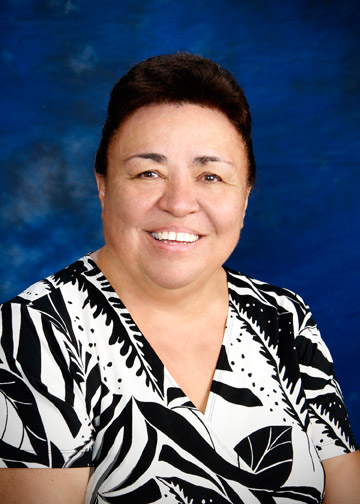
Jul 7, 2011 | Community
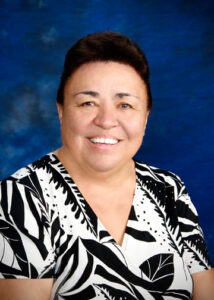 Continuing our series on newly appointed County Department Directors, reflecting the role of government in responding to community values and needs.
Continuing our series on newly appointed County Department Directors, reflecting the role of government in responding to community values and needs.
The Maui County Department of Housing and Human Concerns provides island residents with assistance in all stages of their lives, says Director Jo-Ann Ridao. “I often refer to my department’s operations as being from the womb to the tomb,” she said. That’s because the department has seven divisions, covering housing, early childhood, immigration services, grants management, the county’s Volunteer Center, Kaunoa Senior Center and the Office on Aging. “My philosophy is to address the needs of a broad range of our community members. An important aspect of my role is to mentor my division heads and facilitate the great work they do,” Ridao said. “I’m the kind of person who enjoys being a mentor.” For Ridao, her department’s priorities are to address the community’s needs for food, shelter and safety.
As budget constraints and limited funding resources present an increasing challenge, the government will need to develop more partnerships and new ways to address human needs, says Ridao. Part of the solution, she believes, is engaging all segments of the Maui Nui community — from unions to churches to businesses — to support the mission of Housing and Human Concerns. “We need to build even further on our tradition of aloha, caring for each other in our community, and volunteerism.” Continuing to provide affordable housing is another community priority close to Ridao’s heart.
A former director for Lokahi Pacific, an independent, private non-profit housing and community development organization based in Wailuku, Ridao has extensive experience in addressing human needs and concerns, and among her accomplishments is selection as a participant in nonprofit management program at Harvard University in Cambridge, Mass. She was born at the Maluhia Hospital in Wailuku and graduated from St. Anthony High School. The rewards of her job are plentiful, she said. “To see immigrants relieved because their paperwork is in good shape seniors getting the support they need and the new first-time homebuyer who moves in to their their home, all of that is wonderful to see.”
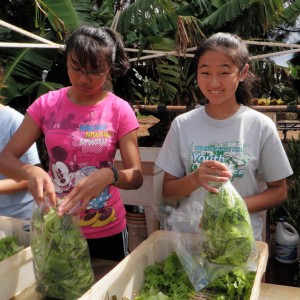
Jun 29, 2011 | Community

Armed with a sense of adventure, students from the Focus Maui Nui Youth Alliance mixed fun and education on Lāna‘i as part of their 2010-2011 capstone event. Alberta de Jetley of the Coalition for a Drug Free Lāna‘i “played” tour guide, using her nonprofit’s van to give the 10 participating teenagers a taste of her home island. They explored the Lāna‘i Culture and Heritage Center, visited with Lāna‘i business owners, planted kombucha and watermelon at Bennie’s Farm, and volunteered at The Cat’s Meow, a thrift shop that raises money to benefit the feral cat sanctuary, which de Jetley helped to establish.
“Any kind of program in which we can show the youth their future possibilities, I’m glad to help,” de Jetley said. “We might possibly be the catalyst or spark plug that leads them to their future endeavors.” The students also enjoyed swimming, hiking and a barbecue at a Lāna‘i campground where the island’s aloha spirit came alive when several residents stopped by to offer the youth some treats. “It was so much fun,” said Willow Krause, who just completed her first year as coordinator of the Youth Alliance. “It really did feel like a culminating activity in which there was a lot of learning and bonding with the kids.”
A 1998 Baldwin High School graduate, Krause said she was impressed with this school year’s Youth Alliance students. “They’re just so much more focused than I was at their age. They have plans for college, ideas on what’s next in their future and even what professions they want to learn about.” Krause said the students show a lot of openness toward new things, even on Lāna‘i where for some of them it was a first-time visit. “They’re just ready to jump in and learn new things.” All together, nearly 40 students in grades 9 to 12, including one home-schooled youth, participated in this year’s Youth Alliance activities. Recruiting for next school year begins in August. For more information, contact Krause at willow[at]medb[dot]org.

Jun 16, 2011 | Community, Events
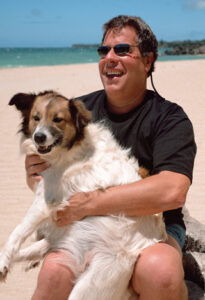 This week, as the Maui Film Festival begins, movies will pay tribute to people who take effective action for a better world. It’s what the Film Festival Founder and Co- Director Barry Rivers said has been always been the focus of the annual event that entertains and enlightens Maui audiences. “The intent is to address issues that include the environment and the interpersonal relations of the people in the islands,” he said. “At the end of the day, we want to share a window on the world that they may not have seen yet.”
This week, as the Maui Film Festival begins, movies will pay tribute to people who take effective action for a better world. It’s what the Film Festival Founder and Co- Director Barry Rivers said has been always been the focus of the annual event that entertains and enlightens Maui audiences. “The intent is to address issues that include the environment and the interpersonal relations of the people in the islands,” he said. “At the end of the day, we want to share a window on the world that they may not have seen yet.”
The Festival runs June 15-19, with movies playing at the Celestial Cinema in Wailea and at the Castle Theater at the Maui Arts & Cultural Center. More information is available at www.mauifilmfestival.com. Children 12 and younger are admitted free on opening night and the closing day of film showings. There are also special events featuring award presentations for outstanding artists, actors and moviemakers, a Taste of Chocolate experience and a panel discussion by filmmakers. This year’s movie lineup includes six films with a Hawaii connection. All the movies attempt to entertain while seeking truth and shedding light on stories and issues, which is the core of the mission of the Maui Film Festival. “It is this belief in the power of creativity that gives the Maui Film Festival its character, its energy and its soul.”
Rivers and his wife, Stella, who live in Haiku, have received accolades for their event, now making its 12th run on Maui. The Celestial Cinema setting in Wailea is a deliberate part of the festival’s vision of showcasing movies in the natural beauty of the island. “Visitors and residents alike tell me that this is the most unbelievable movie-going experience,” Rivers explains, adding that many plan their vacation schedule or entertainment budget around the festival. Rivers credits sheer willpower and the passion and energy of some 300 people, many of whom are volunteers, for the success of the festival.

 Parents at Kamali’i Elementary School in Kihei know that teachers don’t educate alone, and that’s why a group of them are launching a new tutoring program this month. It’s called “Study Buddies,” and instead of getting assistance with homework after school, students will be able to get help before the school day begins. “Children who are having difficulty finishing homework, grasping certain basic core concepts or those who need to practice with their reading or math skills can take advantage of this program,” said Rachel Christopher, one of the parents behind Study Buddies.
Parents at Kamali’i Elementary School in Kihei know that teachers don’t educate alone, and that’s why a group of them are launching a new tutoring program this month. It’s called “Study Buddies,” and instead of getting assistance with homework after school, students will be able to get help before the school day begins. “Children who are having difficulty finishing homework, grasping certain basic core concepts or those who need to practice with their reading or math skills can take advantage of this program,” said Rachel Christopher, one of the parents behind Study Buddies.
 Continuing our series on newly appointed County Department Directors, reflecting the role of government in responding to community values and needs.
Continuing our series on newly appointed County Department Directors, reflecting the role of government in responding to community values and needs.
 Guided by the Focus Maui Nui vision, values and key strategies for action, Youth Alliance members are empowered with the skills and experiences to become leaders for change. For the third consecutive year, 16-year-old Adam Skelton has signed up to be a part of the Youth Alliance. “I’ve learned a lot and picked up experiences I’ve never had before,” the Upcountry student said.
Guided by the Focus Maui Nui vision, values and key strategies for action, Youth Alliance members are empowered with the skills and experiences to become leaders for change. For the third consecutive year, 16-year-old Adam Skelton has signed up to be a part of the Youth Alliance. “I’ve learned a lot and picked up experiences I’ve never had before,” the Upcountry student said.
 Health care is one of the most important needs in the community, and the Kihei Wailea Medical Center is contributing its time and talent toward helping the island’s uninsured. The staff and its physicians, Dr. Marcus Griffin and Dr. Gayland Yee, have held free health screening clinics for more than 100 patients during the last two years. The most recent event in June drew 60 patients and has inspired other health care providers to follow the medical facility and Office Manager Joel Krause’s lead. “People want to help, they want to give back and that positive energy is wonderful,” Krause said.
Health care is one of the most important needs in the community, and the Kihei Wailea Medical Center is contributing its time and talent toward helping the island’s uninsured. The staff and its physicians, Dr. Marcus Griffin and Dr. Gayland Yee, have held free health screening clinics for more than 100 patients during the last two years. The most recent event in June drew 60 patients and has inspired other health care providers to follow the medical facility and Office Manager Joel Krause’s lead. “People want to help, they want to give back and that positive energy is wonderful,” Krause said.
 Continuing our series on newly appointed County Department Directors, reflecting the role of government in responding to community values and needs.
Continuing our series on newly appointed County Department Directors, reflecting the role of government in responding to community values and needs.




 This week, as the
This week, as the 